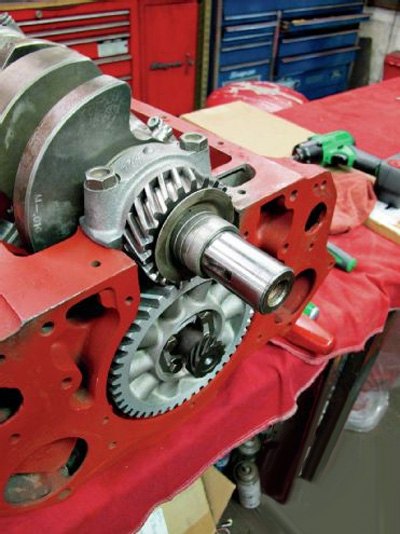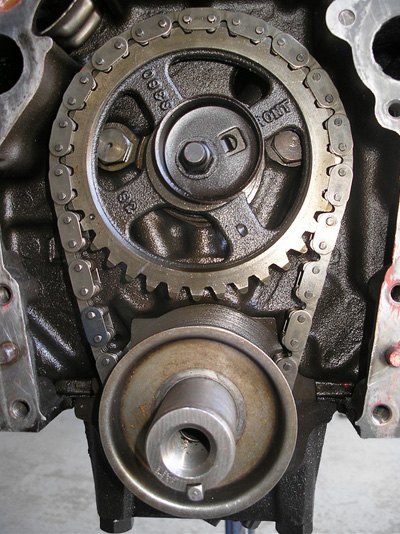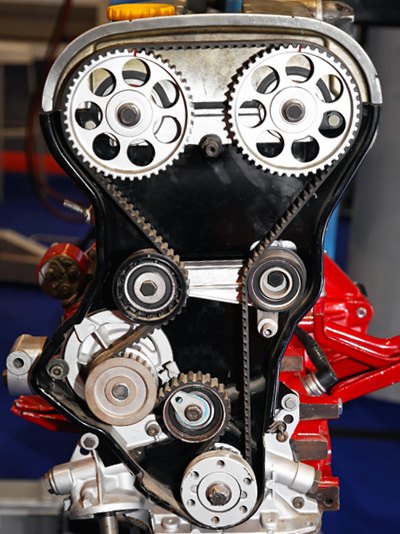Does your ride have timing gears, a timing belt, or a timing chain? Is one better than the other? And perhaps most importantly, do I need to be concerned about the recommendation to replace the timing belt at a certain mileage interval? Welcome to our discussion of "engine timing".
Unless you're driving a Mazda with a rotary engine, the motor in your car or truck, gas or diesel, has one or more camshafts. It's the camshaft which opens and closes the valves, and this must be precisely timed with the up and down movement of the pistons. The phrase "engine timing" in this case refers to the need for some mechanical connection between the crankshaft and camshaft, to keep piston and valve movement in exact coordination.
This coordination occurs by one of three methods: timing gears, a timing chain, or a timing belt. Let's briefly look at each.
Timing Gears
Timing gears in some ways are the easiest to explain. A gear on the front of the crankshaft is in constant mesh with a gear on the front of the camshaft. That's it. Nothing else is needed to connect the two. These gears are almost always located on the front of the engine, and are lubricated by engine oil. They only need attention if one of the gears starts to wear, in which case replacement is the only repair.



In this photo, the smaller top gear is the crank, and the larger bottom gear is the cam.
Timing Chain
A timing chain is used when the spacing between the crankshaft and camshaft is too large to allow the gears to touch. A chain offers the advantages of being stronger, and not requiring regular replacement. One disadvantage is that a chain must run in oil, so it must be designed to sit inside the engine, which makes access more involved. In this photo, a chain connects upper (cam) and lower (crank) gears. A timing cover then mounts over the set, and oil is fed to the chain and gears to keep them lubricated.
Timing Belts
In recent times, many engine manufacturers have reverted to timing belts. There are many advantages to using timing belts: they are quiet; manufacture and assembly are easier because they can sit 'outside' the engine, as oil is not needed for lubrication; and they can more easily be routed over multiple gears for engines with multiple camshafts. One disadvantage for the owner is the required replacement interval. When timing belts were first introduced, it was not unusual for the replacement interval to be 30,000 miles. With improved belt material, the typical replacement today is anywhere between 60,000 and 100,000 miles. Nevertheless, it is a maintenance item you don't want to skip. Should the belt break, your engine will immediately stop running, and, you may do further damage in the way of bent valves. Stick to the manufacturer's recommended replacement interval!
Cylinder Head
In this photo the engine has 2 camshafts at the top of the cylinder head, so the cams are relatively far away from the crankshaft at the bottom. A timing belt can more readily be routed where it needs to go. This timing belt also drives the water pump, and is tensioned with a belt tensioner. In general, when replacing this belt, it's cheap insurance to also replace the pump and tensioner. Many times, you will find timing belt kits which include all these components.
A quick check with your dealer, or in your owner's manual, will tell you what kind of engine timing system you have, and whether you need to buy parts or schedule any maintenance work. Be "on time" with your engine timing!
